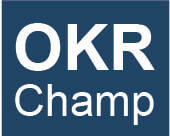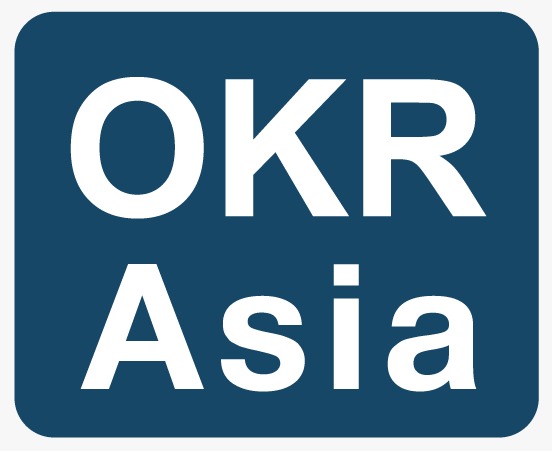OKR Coach Certification Program: Your OKR Champ Journey
OKR Coach Certification Program: Your OKR Champ Journey
Before jump into OKR, and implementing any grand-scale projects, organizations tend to use pilot projects to simplify things. The common characteristic of all pilot projects is that they are less time-consuming, complex, and require more a spirit of try and do rather expertise and experience. Hence it is necessary that organizations invest in the right OKR Coach certification program.
In this article, you will learn how to design and implement an OKR pilot program in your organization.
OKRs are Simple, yet challenging
A pilot program is with objectives and key results (OKRs)is simple because OKRs have only a few rules:
(i) setting qualitative objectives that describe team’s intentions and aspirations;
(ii) defining three to five quantitative key results for each objective.
(iii) connecting the daily tasks or actions to these OKRs
That about sums it up.
So, what is so hard about OKRs?
One of the biggest challenges is that OKRs are about shifting a team’s mindset from outputs to outcomes and not about completing tasks, whereas organizations are accustomed to completing tasks. In order to accomplish results, organisations need to encourage the teams to think in terms of OKRs. We at OKR Champ make sure that our OKR coach certification program covers all essential aspects.
Secondly, it’s a change in processes. Using OKRs means challenging your organisation to think differently and measure and proof everything.
When organizations adopt OKRs on a large scale (thousands of people), these obstacles become more challenging and complex.
In order to implement OKRs, as well as to define a pilot program, these questions must be answered.
- Vision: What is the purpose of doing this?
- Skills: Does the organization possess the necessary skills for implementing the change?
- Incentives: How will the team benefit from participating?
- Resources: Does your team have the necessary tools, budget, and time?
- Action plan: What is the program you plan to execute?
Defining your pilot
Defining the pilot vaguely is the primary cause of OKR pilot failure.
In order to get the OKR pilot project off the ground, four main questions should be answered.
- How can OKRs help team achieve their goals?
- Why are we conducting a pilot project?
- What is the pilot going to look like?
- Which outcomes do you hope to achieve?
Why are we implementing OKRs?
All other actions and decisions that a team makes will be influenced by the answer to the question of why your organization wants to implement OKRs.
Three basic ideas promised by OKRs are:
- Be transparent: know what’s going on
- Prioritize: take care of what’s most important
- Alignment: work together on what matters
Can you describe the desired outcome?
Identifying what an organisation wants to accomplish with a pilot program is the most important thing to figure out before planning one. Most organizations can have one or more of the following ambitions:
- Demonstrate the effectiveness of OKRs. Typically, OKRs focus on one or more of the following:
- Improved alignment
- Increased Transparency
- A higher level of engagement
- Focused laser on Execution
- Establish OKRs within our organization and demonstrate their effectiveness.
- The use of OKRs at scale must be proven.
Developing the pilot plan
It is common for a pilot project to have several components. Pilots should have an objective – i.e., what they are trying to prove or disprove.
Additionally, it is necessary to define the duration and who will participate in the pilot study in addition to the objective.
Looking for Best OKR Coach Certification? Know more here
Define the objectives of the pilot
The single purpose of running a pilot process is to prove or disprove something on a smaller scale, in a controlled environment, and with minimal risk.
So, with that in mind, the most important part of any pilot project is to define what success looks like and what needs to happen for the pilot to be declared a success. At the end of the pilot, there should be no ambiguity regarding whether the pilot was successful or not.
Common objectives of an OKR pilot
Even though a team may define the pilot project in a number of dimensions, we recommend six distinct categories that are generally a part of the pilot success criteria.
- Onboarding: can we get people to use OKRs in the first place?
- Activity: how active and engaged with the process people will be?
- Alignment: are we more aligned as an organization with OKRs?
- Transparency: have we improved transparency between different silos, employees, and teams?
- Focus: are we more focused on what is important with OKRs?
- Attainment: are we achieving our objectives now that we are using OKRs?
Length of the pilot
Once the team has decided on your pilot’s objectives, the next step is to determine its length. Depending on what a team hopes to prove through the pilot project, the time period over which a team should run the project will vary.
An organization with fewer than 500 people is recommended to conduct pilots for three to six months, with real results visible after the sixth month in general. A 2 to 4 quarter pilot project is recommended for larger organizations due to its scale and complexity. Generally, the pilot project at a larger organization is expected to be progressive, which means that it should be scaled up every quarter. By the twelfth month of the year, the organization should be ready to roll out OKRs across the board.
Conclusion
OKRs can prove to be instrumental in bolstering your organisation growth, without having another on the ‘To Do’ list. Moreover, a great way to shift from Knowing OKRs to actually implementing OKRs, is through Pilot project










